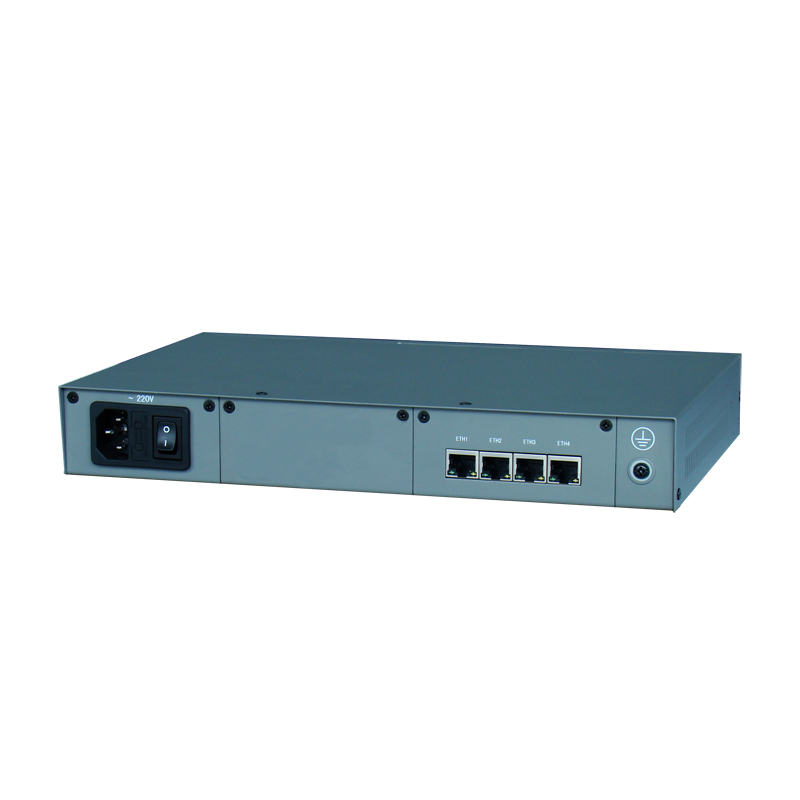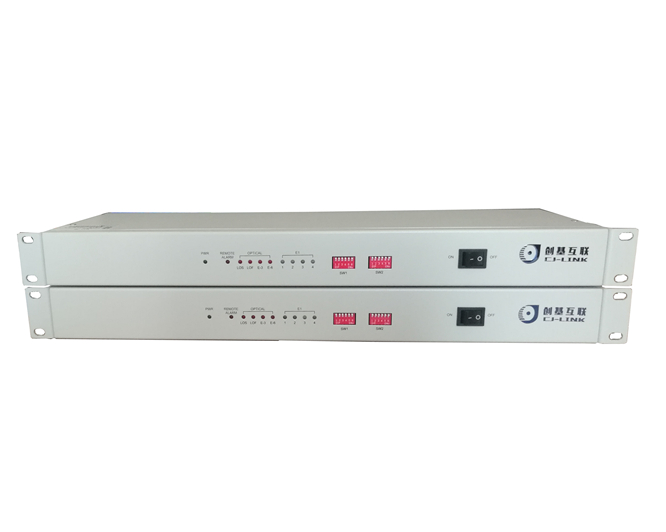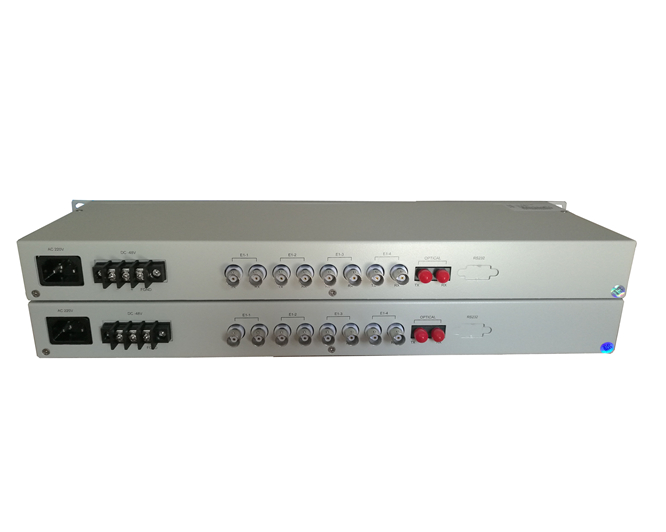Ethernet Over SDH(STM-1、155M)
1 Introduction
1.1 Overview
BH-OTS-155SC is designed as a STM-1 level optical modem with two 155.520Mb/s optical interfaces to provide an ultra-compact, cost-effective and flexible multi-service platform. With 4 Ethernet interfaces compatible with IEEE 802.3/802.3u standard and 4/8 E1 interfaces compliant to ITU-T G.703 standard, it is easy to implement E1 and Ethernet transmission over SDH.
BH-OTS-155SC supports port-based VLAN and IEEE 802.1Q tag-based VLAN. By adopting ITU-T G.7041, G.7042 and G.707-compliant EOS (Ethernet Over SDH) technology and VLAN technology, each Ethernet port can employs 1~4 separate Virtual Concatenation Groups (VCG), and each VCG can be assigned to one or more Ethernet ports. The bandwidth of VCG can be flexibly configured for efficient transmission of Ethernet data over SDH network.
BH-OTS-155SC supports NE management based on CLI command and NMVIEW network management platform based on SNMP_V1 and SNMP_V2 protocol, to perform excellent management such as configurations, alarm monitoring and performance statistic.
BH-OTS-155SC is suitable for data access network on the client side. With the technology compliant to ITU-T standards, it can communicate with products from other vendors adopting the same standards.
1.2 Features
- Chassis Dimension
- Compact design with 1U height, 270mm width and 195mm depth
- Cross-connection with TU-12 granularity
- Optical Interface
- TwoSTM-1 interfaces, SFP optical module (LC connector), hot plug-in
- Supports single mode optical fiber only, with selectable transmission distanceof 15Km, 40Km and 80Km
- Complies with GB/T15941-1995 and ITU-T G.813 standards
- Supports RPD (Remote Power down Detection) information sending function
- Supports ALS (Automatic Leaser Shutdown) to protect operators from hurt
- E1 Interface
- One E1 card slot for 4-E1 or 8-E1 card
- Optional 120Ω balanced E1 interface (RJ48C interface) / 75Ω unbalanced E1 interface( DB37 connector, provide BNC interface by cable adapter)
- E1 interface complies with ITU-T G.703 standard
- Ethernet Interface
- Four LAN ports(physical port), each LAN port supports auto-negotiation, it can also be set to 10M full/half-duplex, 100M full/half-duplex mode by force
- Four WAN ports (internal port and invisible), each WAN port employs a VCG; the total bandwidth of 4VCGs is 63VC12 and the bandwidth of each VCG is up to 48 VC12(100Mbps)
- The LAN and WAN ports are compatible with IEEE802.3/802.3u standard
- Supports flow control and broadcast storm filtering control
- Supports port-based VLAN and IEEE802.1Q tag-based VLAN
- Supports GFP-F Encapsulation specification complying with ITU-T G.7041
- Supports VCAT specification complying with ITU-T G.707
- Supports LCAS specification complying with ITU-T G.7042
- Provides both LCAS and Non-LCAS modes
- The maximum tolerated differential delay between any two VC-12 channels is 112ms
- Timing mode
- ITU-T G.813 internal oscillator
- STM-1 line timing (T11,T12)
- The timing source can be operated automatically or controlled.
- Protection
- Supports 1+1 path protectionwith switching time less than 50ms
- Supports Automatic protection mode and manual protection mode
- Supports embedded BERT and various loop back for troubleshooting
- Supports FTP protocol and firmware download online without disturbance of existing traffic
- NE Management
- Provides serial managementinterface(CONSOLE) and Ethernet management interface (EMU), both adopt RJ45 connector
- Supports network management based on SDH overhead or on internal E1 channel
- Supports NE management based on CLI command via RS232 interface or TELNET
- Supports NMVIEWnetwork management platform based on SNMP_V1 and SNMP_V2 protocol to perform excellent management
- One -48V DC, or one ~220V AC power supply; power consumption is less than 15W.
who are we?
how can we guarantee quality?
Always a pre-production sample before mass production;Always final Inspection before shipment;














